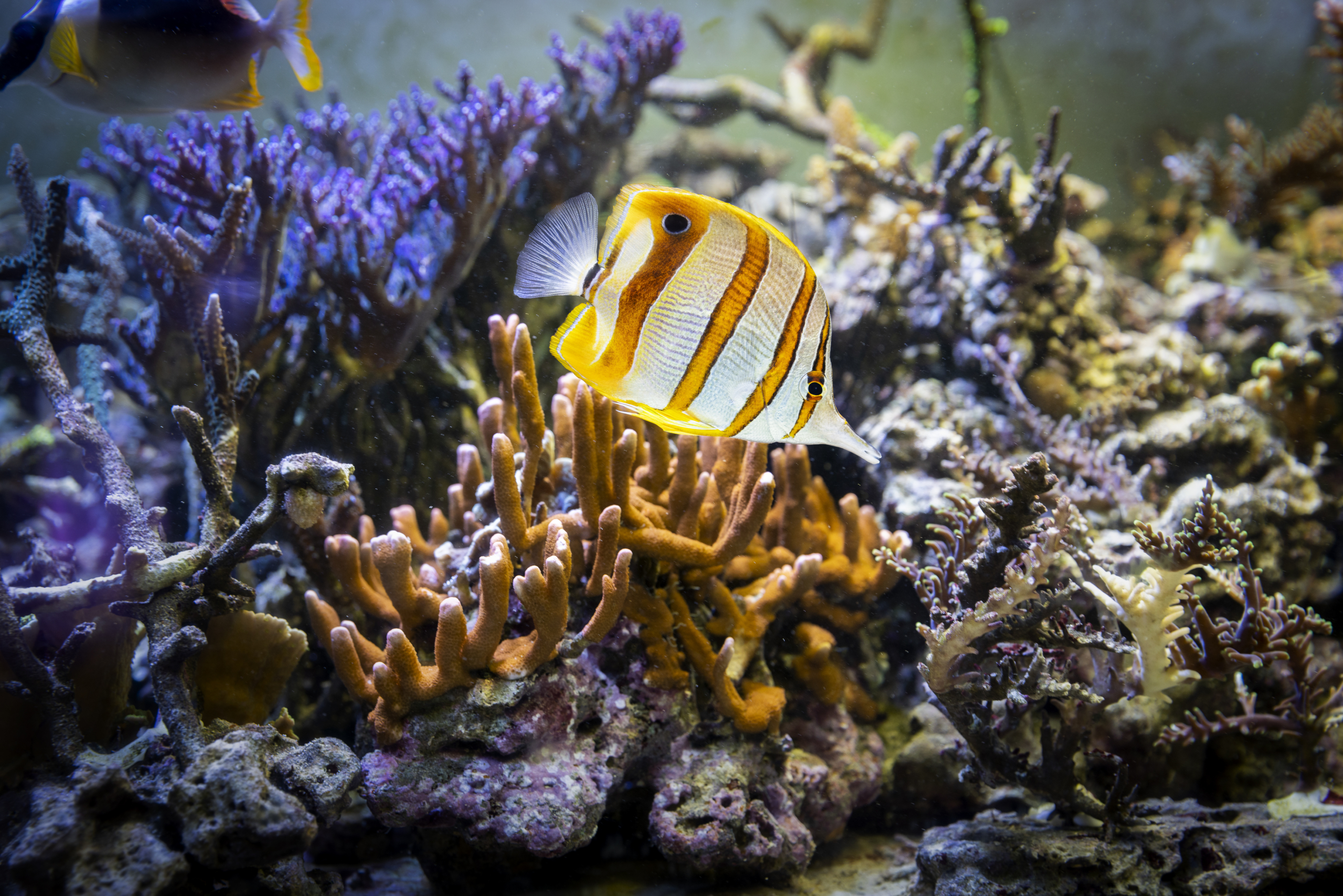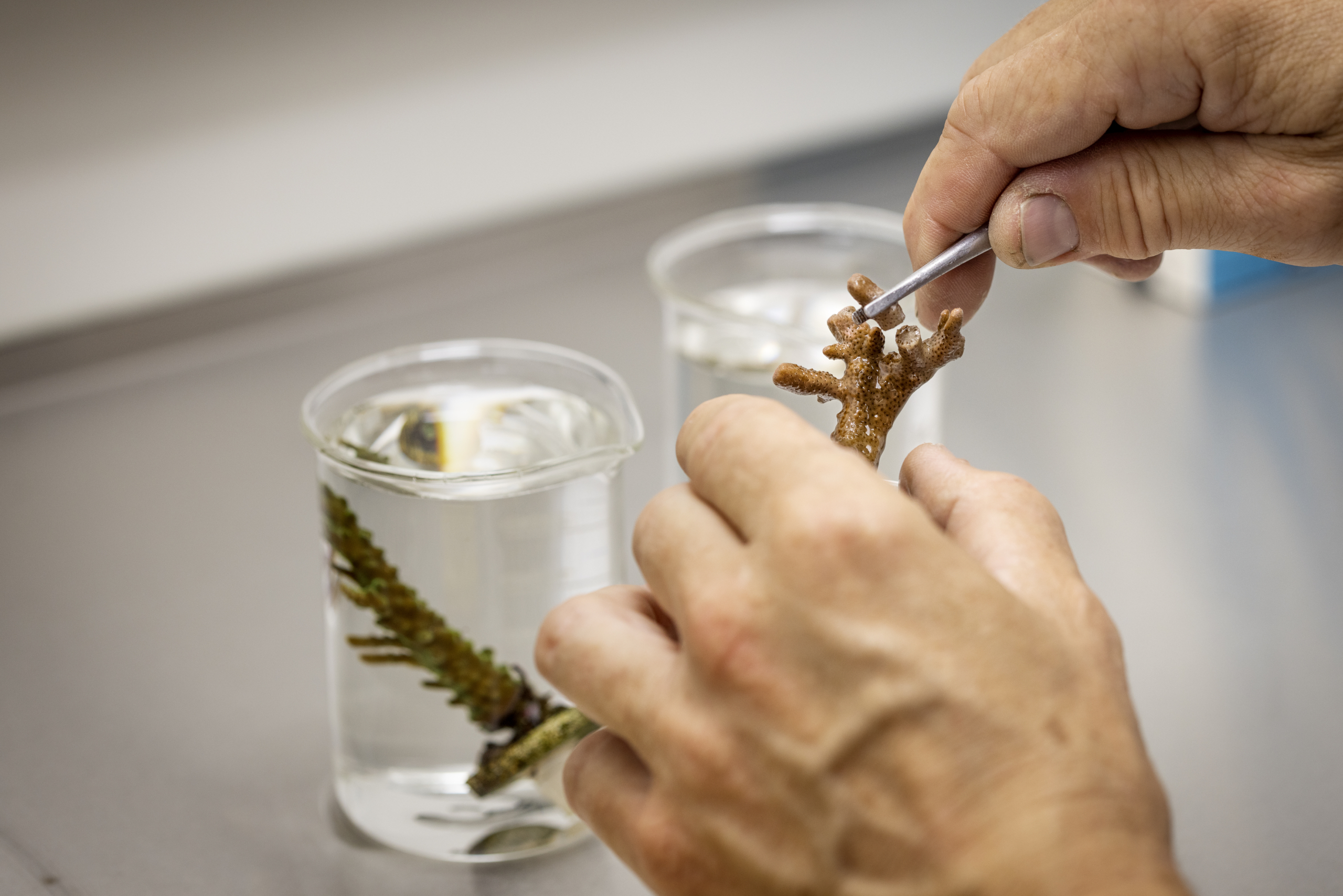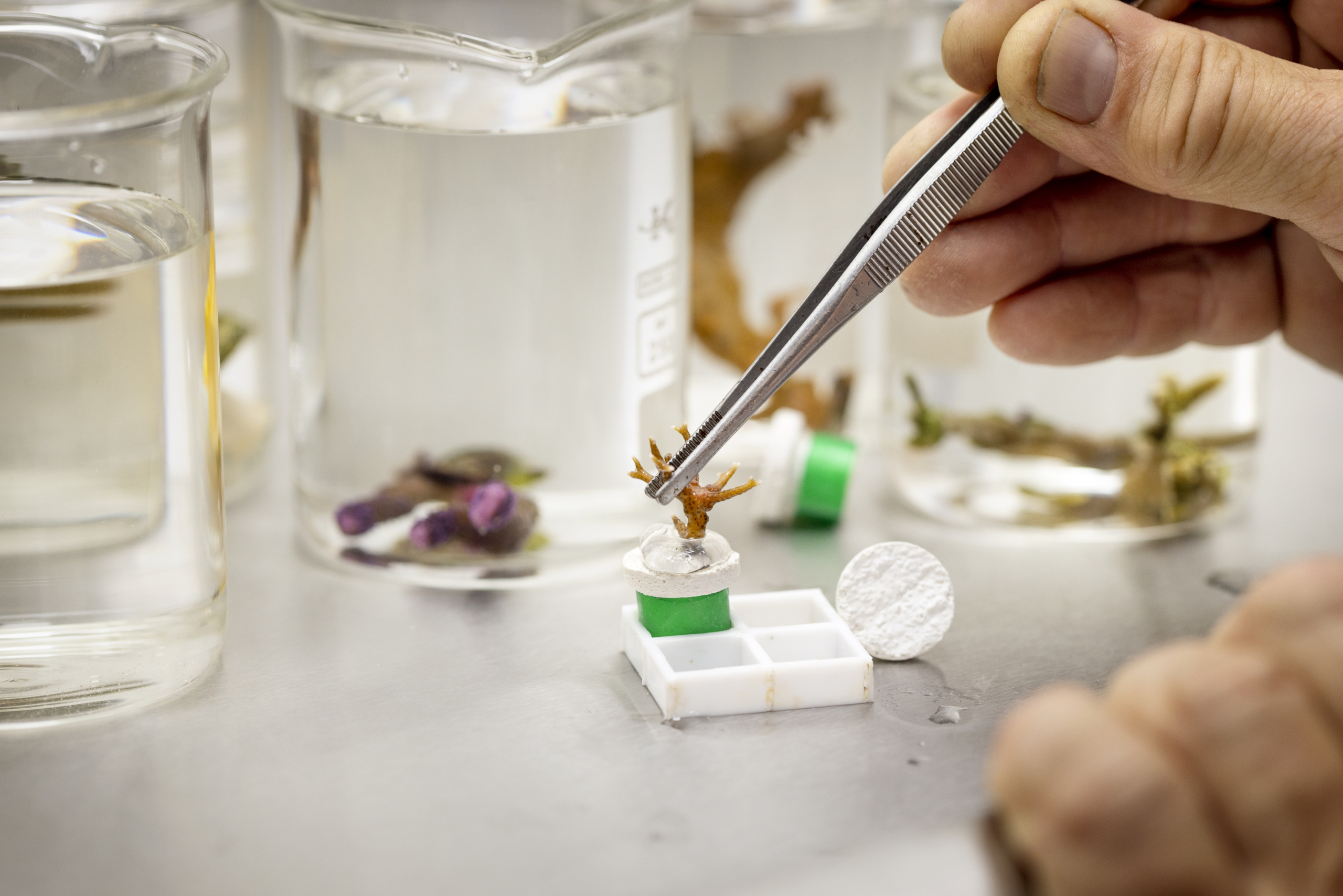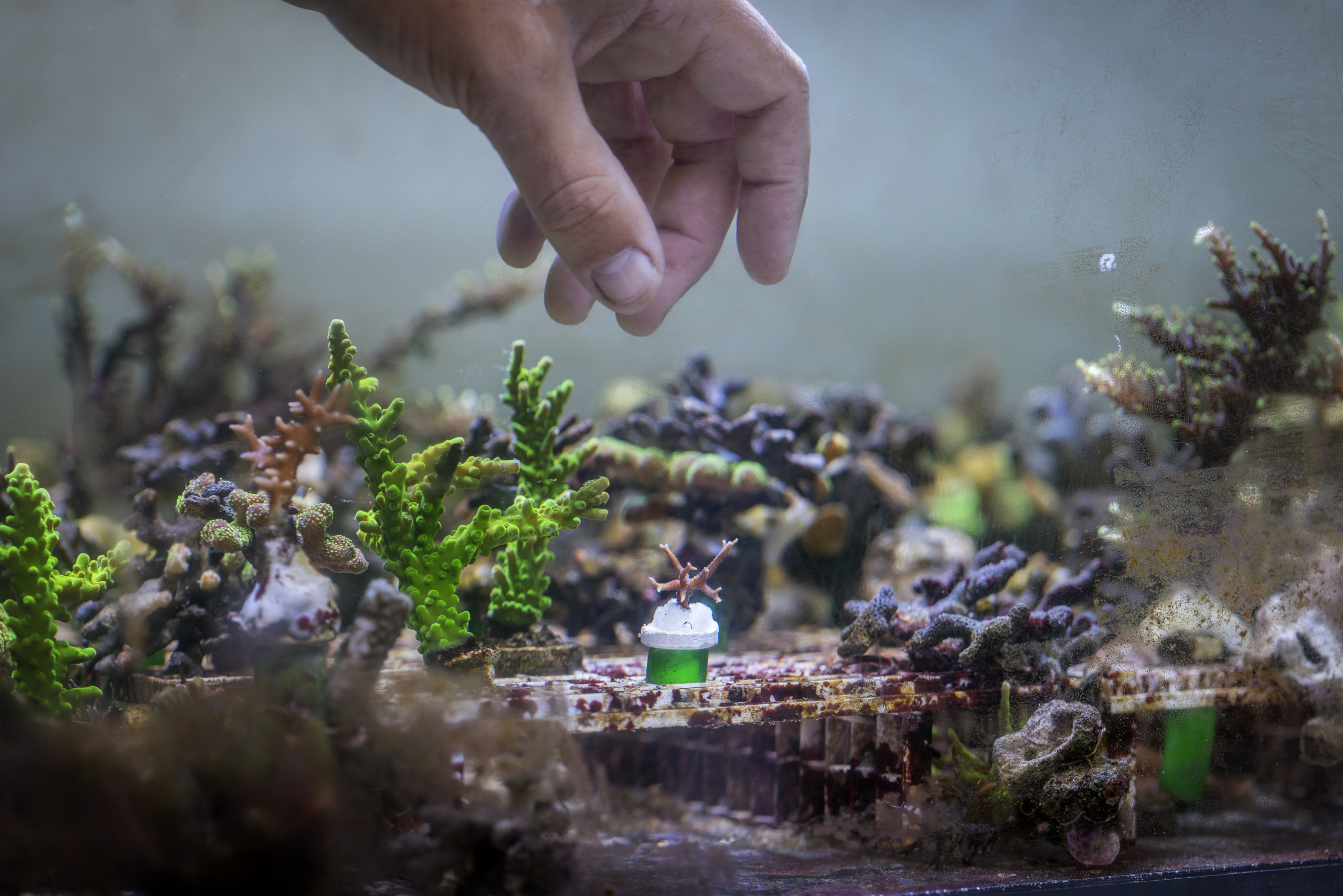In the public aquarium hall, the largest aquarium, Korallhavet (with a capacity of 400,000 litres), is the home to hundreds of endangered tropical corals. In this aquarium, the museum’s marine biologists use light and salinity to carry out experiments on ultimate living conditions for the delicate corals.
“The corals will be fairly small at first, but they’ll grow within a year or so. Visitors will be able to trace their development over time,” says Björn Källström, researcher and development manager at the aquarium.
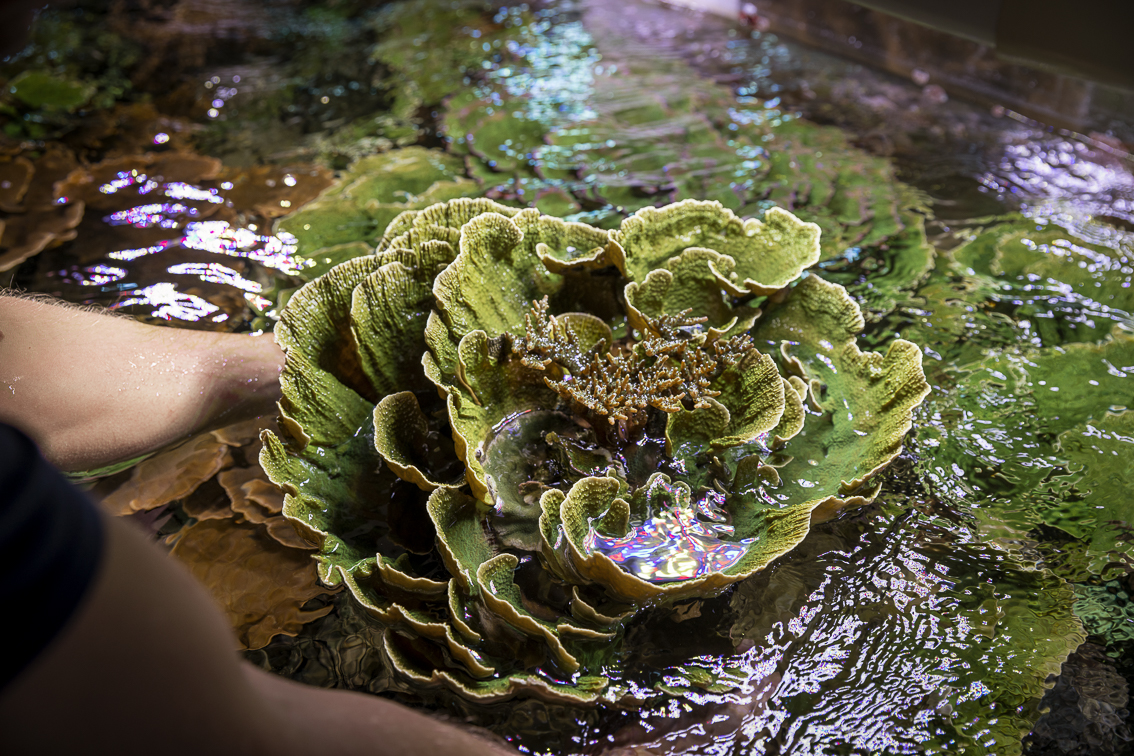
The Montipora coral is one of around a hundred species that will be displayed in the aquarium. Photo: Kristin Lidell
Rescuing and breeding endangered corals
The Maritime Museum and Aquarium’s coral aquarium is unusual. This is because it houses living corals, which is rare in public aquariums, and also because coral reefs are endangered ecosystems. According to a climate report from the UN’s Intergovernmental Panel on Climate Change (IPCC), only one per cent of the Earth’s coral reefs are likely to survive if we exceed two degrees of global warming. It may perhaps not be possible to experience most of the corals at the Maritime Museum and Aquarium in the wild in the future
“We can’t stop the climate crisis by cultivating corals, but we can help save them for the future,” says Björn Källström.The hard work of building up the gene bank is now in progress in a molecular laboratory at the aquarium alongside the work of cultivating and breeding corals to ensure their survival.
Depending on how bad conditions become for coral reefs, our corals may also become important for restoration of coral reefs in the natural environment.
Björn Källström, Aquarium Development Manager.
Gene bank forms part of international research collaboration
The aim of the gene bank is to connect public aquariums in Europe – and at a later stage all over the world – housing living coral aquariums. By creating a communal database, researchers will be able to keep track of the species of corals kept in the various public aquariums in the long term.
“We can then share corals within the gene bank so we spread them out over a large number of aquariums. We will also allow researchers to access the corals in the gene bank in order to carry out research projects. They are not primarily intended for planting in the sea, but depending on how bad conditions become for coral reefs, our corals can also become important for restoration of coral reefs in the natural environment,” says Björn Källström.
Facts: how to breed corals in three stages
One of the methods that marine biologists at the aquarium use to breed their corals is “fragging”. This involves dividing up the corals and sticking them to a plate with superglue and placing them in an aquarium to grow. Click through the slideshow using the arrows to see how it works.
